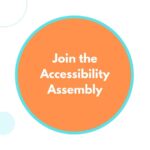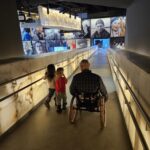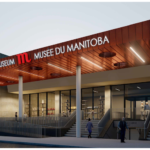Sometimes, we find ourselves labeling past ideas as “dumb” or “poorly designed,” forgetting that such assessments are markers of our forward trajectory.
Note, however, that there are also instances where it has been a harmful, intentional, and hurtful decision to exclude people with disabilities— a topic that deserves its own post. I’m working on that one. I have been for my whole life.
But consider this: What we perceive as impractical or inefficient in design today is often a testament to how far we’ve come. Those “silly” notions of past designs were stepping stones toward the more enlightened views we hold today. In the realm of accessibility, it’s crucial to recognize that what may appear outdated now was once groundbreaking.
This journey extends beyond physical structures and technological advancements; it’s a fundamental aspect of human rights. The way we design spaces, both physical and virtual, directly impacts the dignity and inclusion of individuals. Each step we take to enhance accessibility is a move toward realizing the fundamental human right where a person can navigate the world freely and be in relationship with others. It’s about creating spaces that consider the intersecting factors of race, sexuality, gender expression, disability, and other aspects of identity, ensuring that accessibility measures are both comprehensive and equitable for everyone.
While the past may seem perplexing or even amusing, it reflects evolving perspectives and practices, with the understanding that accessibility intersects with all dimensions of human experience. It signifies more people coming together, considering diverse perspectives to make decisions, and doing a better job. As we move forward, let’s appreciate the groundbreaking work laid by those who earnestly tried to make a difference. Critiquing the past is not about dismissing it but understanding that we, as a society, are on a perpetual journey toward a more inclusive future that embraces the richness of intersectionality.
It’s not just about moving forward; it’s about moving forward together.
That being said, what’s the ‘silliest’ thing you’ve seen in accessible design? I like a good laugh.
Access is for everyone!
Peter



